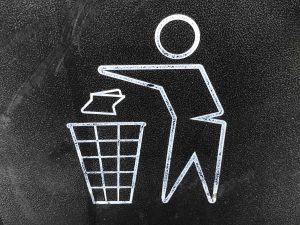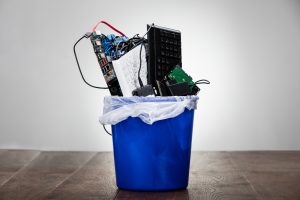What is IT Equipment Recycling?
Importance of IT Equipment Recycling
Sustainability and the circular economy are high on the list of priorities for many people these days. In this regard, one essential activity that individuals and corporate bodies can actively engage in is IT equipment recycling.
Taking steps to recycle old IT equipment and IT equipment refurbishment for extended use are ways to reduce or eliminate waste, use fewer resources, and “give something back” to the cycle of production/consumption and the environment at large.
Many non-profit organizations and government agencies provide avenues to make IT equipment recycling free, as recycling is a sustainable and ecologically friendly alternative to simply throwing old materials away or disposing of them through potentially polluting techniques like burning. Many of the materials employed in making the products we use daily can be recovered and reused. These include plastics, glass, metal, and aluminum.
For many organizations, Corporate Social Responsibility or CSR is actually a formalized policy and an integral part of their stated mission, putting sustainable practices and environmental consciousness squarely on their operational and business agendas.
What is IT Equipment Recycling?
IT equipment recycling is a sequential process of dismantling computer hardware and related electronic devices, separating out the pieces containing hazardous substances, then recovering valuable or usable materials from their parts and circuitry.
Broadly speaking, there are three main types of recycling: primary, secondary, and tertiary. If you want to know how to recycle IT equipment currently in your possession, these are the basic approaches that will be adopted.
Primary or closed-loop recycling is converting one discarded material into reusable forms of the same material; recycling old paper products to produce more paper or aluminum cans to make more aluminum cans would be examples. IT equipment refurbishment enabling continued use of the same devices would fall under this category.
Secondary recycling involves the same material but is somewhat more versatile in that the recycled substances can be fashioned into different forms using that same material. A typical example is recycling old tires, which can be shredded up into their native rubber to produce a wide range of alternative products, such as soles for shoes, insulating materials, and gaskets. It’s possible to recycle old IT equipment in this way, for some of the component materials used in their manufacture.

Tertiary recycling is also known as chemical recycling and involves processing the recycled materials to break them down chemically and convert the resulting residue to other substances. Extracting precious metals and solvents from electronic circuit boards would be an example of IT hardware recycling in this category.
As we’ve observed, many agencies provide resources to make IT equipment recycling free and encourage people to favor recycling and reuse as better alternatives to simply throwing stuff away.
Professional IT equipment recycling services may charge you for the environmentally safe disposal of your IT assets but can also provide benefits that offset these costs.
For example, some IT equipment recycling companies will first do an on-site inspection or audit of your IT infrastructure and draw up an inventory with a valuation of the various items.
With this approach, it’s possible to recycle IT equipment for cash and flag devices and infrastructure suitable for onward sale to third parties.
So on many levels, it makes more sense to recycle IT hardware than to discard it entirely at the end of its service life.

Make an Informed Decision
How to Securely Dispose of IT Equipment
The secure disposal of IT equipment falls under the remit of several laws and industry-specific regulatory compliance frameworks.
The Canadian Environmental Protection Act, 1999 (CEPA 1999) Regulates toxic substances & international / inter-provincial hazardous waste movements. Environment Canada is the regulating authority and is taking action to broaden regulatory controls applicable to the import & export of used & end-of-life electronics.
A number of factors are driving changes in the way Canada handles hazardous waste and recyclables. Canada has ratified the United Nations’ Basel Convention, which requires the environmentally sound management of hazardous wastes and recyclables and reductions in exports for final disposal.
Canada has also implemented the Organization for Economic Co-operation and Development (OECD) decisions on the control of trans border movement of waste destined for recycling, and has signed a separate bilateral agreement with the United States to control the cross-border movement of e-waste and recyclables.

How IT Equipment Recycling Works
For corporate bodies, a winning attitude to IT equipment recycling starts at the level of your organization and covers several aspects.
First, make an inventory of which materials are eligible for recycling, and communicate this information to everyone in your organization. Then allocate an area for disposing of each substance, with clear indicators on how to recycle IT equipment. The simplest way to do this is to set up specific bins for each type of material — labeled and/or color-coded.
IT equipment eligible for recycling will include hard disks and other storage devices that likely hold sensitive information. So to recycle old IT equipment and preserve your own information security while observing all the requirements of the data privacy and governance rules that apply to your industry:
- Remove hard drives before recycling computer equipment.
- Erase hard drives before recycling.
- Destroy data on hard drives before recycling.
- Engage with data destruction services or a dedicated hard drive destruction service to implement the best ways to dispose of hard drives and other IT equipment securely.
Effective data sanitization, hard drive destruction, secure hard drive disposal, and the properly sanctioned and environmentally sound disposal or recycling of IT equipment assets probably aren’t within the limits of your resources and skillsets. So, you’ll need to engage the expertise of a professional IT equipment recycling service.

IT equipment recycling services routinely provide effective and compliant recycling and should also be able to document the Chain of Custody of all IT equipment they handle on your behalf and furnish a certificate of destruction for every item they destroy.
To identify the location of “IT equipment recycling near me,” you can start with a simple web search. However, there are many dedicated resources available for this purpose. For example, the Environmental Protection Agency website provides an engine that lets you search by product or company for recycling programs run by electronics manufacturers and IT equipment retailers.
Several non-profit organizations and local communities offer options to help in the recycling of old electronics and IT equipment. For example, the EPRA Electronic Products Recycling Association is a not-for-profit organization that manages government approved programs that are established by manufacturers, and other e-waste companies to collect and responsibly recycle end of life electronics to prevent them ending up in landfills. TechReset is participant in this program.

See how much your IT equipment is worth
Why not to Dump IT Hardware
Much of the IT equipment and consumer electronic goods sold are designed with a deliberately short service life to induce buyers to invest in additional purchases as manufacturers and vendors bring new models to the market and upgrade systems to perform better or different functions. This trading up then raises the question of what device owners should do with their old IT equipment and other goods: Throw them away? Sell them? Or recycle?
Unfortunately, disposal has been the prevailing option. A recent study by the United Nations revealed that 53.6 million tons of electronic waste or e-waste were discarded in 2019 – and only 17.4 percent of it was disposed of properly.
IT hardware recycling eliminates this tendency towards waste and pollution. This recycling activity not only yields valuable and usable substances for onward sale or incorporation into new products. It also conserves energy and natural resources. The US Environmental Protection Agency reckons that recycling one million laptops saves the energy equivalent to the electricity used by more than 3,500 homes in a year.

Laws relating to how and why it’s necessary to recycle IT hardware seek to limit the amount of electronic waste that goes to landfills and to increase the amount of waste that’s being recycled. Canada and the US currently impose landfill bans on items that can cause harm to the environment, including batteries, untreated medical waste, and computers.
Secondary recycling (repurposing material for various applications) in particular offers several benefits. By keeping discarded materials out of landfill sites, it reduces waste and extends the usable life of materials currently in circulation. It’s also an efficient process that takes less time and equipment than tertiary recycling procedures that require the chemical breakdown of materials.
Secondary recycling of IT equipment and other materials also fuels innovation. While primary recycling enables us to create more of the same product without using additional natural resources, secondary recycling processes create opportunities for developing new ways of incorporating materials into existing products or using them in new ones.
IT Equipment Disposal Policy
As part of your commitment to best practices and Corporate Social Responsibility (CSR), it’s a good idea for your organization to draft a formal IT equipment disposal policy, in line with all relevant state, local, and federal laws, industry-specific mandates, or regulatory compliance regimes, and your organization’s stance on CSR.
Several organizations publish an IT equipment disposal policy template online, which you can use as a guideline framework. Some of the main points to cover include:
- Objectives of the policy document
- Scope of the policy
- Itemized Guidelines for disposal of IT equipment
- Related Standards, Policies, and Procedures
- Relevant Compliance Measurements or Conditions
- Definitions and Terms
Make sure to communicate the contents of your disposal policy for IT equipment to all relevant stakeholders. You can also establish dedicated recycling teams to help in driving the initiative.

Partner with a Professional IT Equipment Recycling Service
When replacing IT equipment, you cannot simply stuff your old equipment in a trash bin, post it in the classifieds, or rely on the nearest recycling company to take it away. You need dependable IT asset disposition services provided by a company you can trust to properly decommission and dispose of, recycle, or remarket the equipment.
At TechReset, we do more than just unwanted computer recycling. We specialize in the safe and proper disposal of electronic waste (e-waste) and guarantee secure data wipes or destruction of your confidential data.
We go beyond computer recycling or e-waste to ensure the least environmental impact possible while helping put money back in your pocket. Our e-waste disposal process includes secure on-site removal, guaranteed reporting, repairing, and repurposing older or unwanted computer equipment — offering our clients ROI for their IT equipment and peace of mind knowing they helped extend the life of their equipment beyond its first use.
Related Posts

ITAD and COVID-19 – A Quick Precautionary Guide
ITAD remains an important initiative for companies, even during the pandemic. If someone told me a few months ago, the universal economy would collapse, millions

3 Key Essentials To Manage Secure Data Center Decommissioning
Data Center Decommissioning requires a focus on the physical IT asset. Physical IT security is vital in making sure the avoidance of data from being

3 Promising Ways To Dispose E-Waste For Any Business
Electronic waste or e-waste is a general term for electronic devices that need to be disposed of. Though it certainly applies to the regular Smartphone
